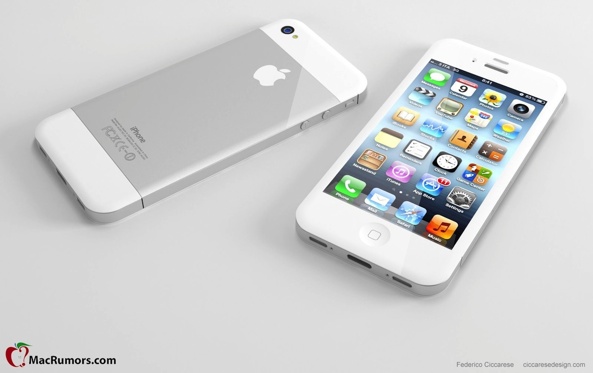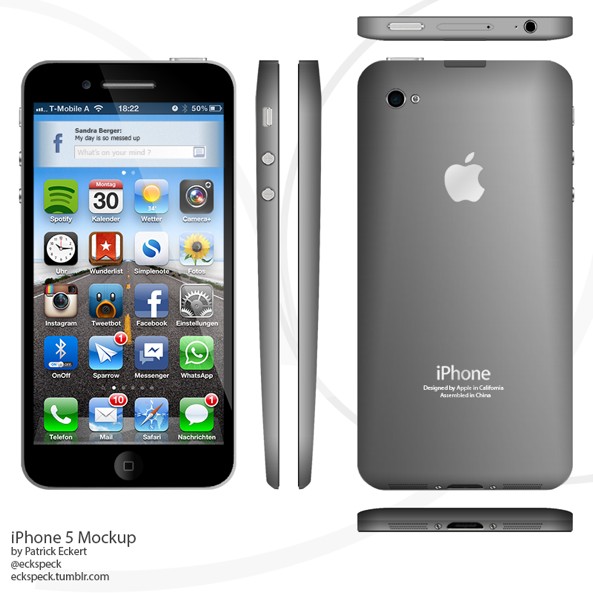Putting its credibility behind a flurry of rumors calling for a sixth-generation iPhone with a screen larger than the current 3.5-inch form factor, the usually well-informed Wall Street Journal reported that production of displays for the next iPhone that measure “at least four inches diagonally” is said to be commencing in June…
Lorraine Luk and Juro Osawa, writing for the Wall Street Journal and citing the inevitable “people familiar with the matter”, reported from Hong Kong:
Apple, which is expected to launch its next-generation iPhone later this year, has ordered screens from its Asian suppliers that are bigger than the ones used in iPhones since they debuted in 2007, people familiar with the situation said.
Production is set to begin next month for the screens, which measure at least 4 inches diagonally compared with 3.5 inches on the iPhone 4S, the latest phone from Apple, the people said.
And sources who spoke with Reuters corroborated the report, claiming that “the new iPhone screens will measure four inches from corner to corner”.
According to the Journal report, Apple is thought to be partnering with multiple suppliers on the new screen, namely Sharp, LG and Japan Display, a new company born last month out of the partnership between the Japanese government and Sony, Hitachi and Toshiba.
Interesting enough, the report makes no mention of Samsung, which has been identified as a prime supplier of high-resolution display panels that go into the new iPad. Apple is Samsung’s top client. The iPhone maker has been sourcing processors, flash memory chips and displays from the South Korea-based conglomerate for years.
I opined a year ago that Apple was looking to slit Samsung’s throat with orders stoppage. That said, I’m not terribly surprised that Apple allegedly turned elsewhere for iPhone 5 panels.
People have been wondering if a larger display means a change in aspect ratio. A four-inch iPhone with a 16:9 aspect ratio display would require a re-write of third-party apps.
One possible solution to elegantly solve this issue involves using the extra space to render additional user interface elements.
Here’s a mockup depicting a regular 3.5-inch iPhone 4S next to a four-inch iPhone and another one featuring a widescreen form factor, credited to The Next Web.
And another one by Patrick Eckert, seen below and based on the oft-rumored “Teardrop” design and aluminum Unibody construction. Notice the extra space at the top being used to display a Facebook widget.
I wouldn’t bet on it, though widgets seem to be on everyone’s wish list for iOS 6.
If production of the new display is commencing next month, then “the new iPhone” could hit the market in the September-October timeframe, which would be in line with a recent report by the notoriously unreliable DigiTimes.
So, it looks like your prayer has been heard and that the next iPhone will in fact feature a blown up form factor.
I’m not sure I like the news.
Obviously there are a lot of people out there keeping their fingers crossed for a larger iPhone.
In my opinion, countless Android handsets with screen sizes measuring from 4.3 inches diagonally (the Galaxy S II) all the way up to 4.8 inches (the Galaxy S III) and beyond have polluted expectations. Some watchers think the Android carpet bombing with oversized devices has forced Apple into engineering a larger iPhone.
I don’t think Apple bows to market trends. They won’t make a four-inch iPhone just for the heck of it or because everyone else is differentiating their smartphones with larger displays.
If a larger iPhone is in the cards, I’d expect sensible changes to its user interface to take into account a larger canvas.
Is Apple bowing to industry trends here or at least giving in to popular demand?
Does a larger screen on the iPhone make sense?
The top mockup depicting a taller four-inch iPhone is credited to designer Federico Ciccarese, courtesy of MacRumors.


